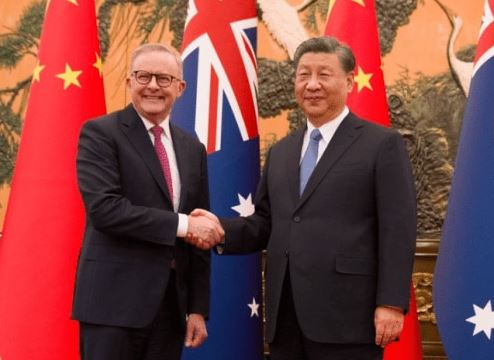Beijing: Australian Prime Minister Anthony Albanese met Chinese President Xi Jinping Monday on the first visit by an Australian leader to China in seven years as the two countries try to mend their tattered ties.
Chinese state media reported the meeting but did not provide details. The talks were expected to focus on trade as China has eased some but not all of the restrictive steps it took as relations deteriorated.
Albanese struck an optimistic tone ahead of his meeting, calling for cooperation while emphasising that the two countries will continue to have differences.
“What I’ve said is that we need to co-operate with China where we can, disagree where we must and engage in our national interest,” he said in Beijing. “I think there are promising signs we’ve already seen, a number of the impediments to trade between our two nations removed and an uplift already, substantial uplift in the trade between our two nations.”
His visit comes near the 50th anniversary of the first trip by an Australian prime minister to the People’s Republic of China.
China and Australia’s relations nosedived in recent years as suspicions of Chinese interference in Australian politics increased. China, in turn, was angered by Australia’s call for an inquiry into the origins of the COVID-19 virus.
China levied official tariffs and unofficial trade barriers that are estimated to have cost Australian exporters up to 20 billion Australian dollars ($13 billion) a year for commodities such as coal, wine, beef, barley, and lobsters.
In the past few months, China and Australia have publicly signalled that resolutions were in sight for the trade issues.
Further, Australian journalist Cheng Lei was released in October after three years in detention under charges of espionage, a case that had come to be a focal point in the tensions.
Even as Albanese has largely sounded upbeat during his visit, Australia is still actively pursuing a security partnership with the United Kingdom and the United States that China views as an attempt to counter its influence in the region.
AP
